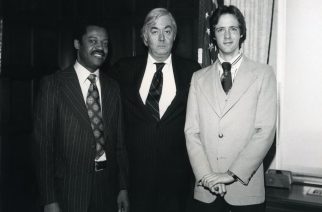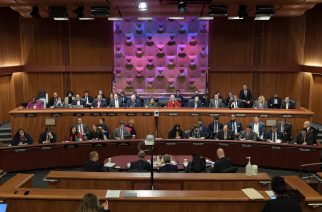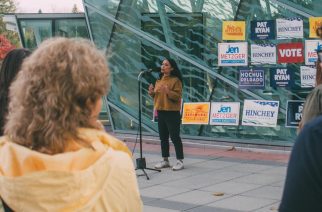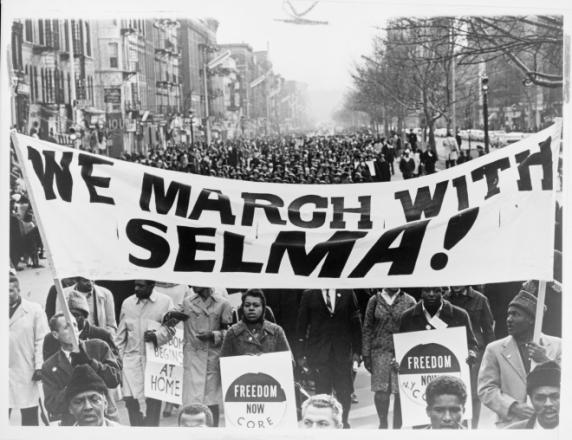
During Black History Month, an exhibit commemorating the 60th anniversary of the Civil Rights Act — and the New Yorkers who helped lead the Civil Rights Movement — will be open to the public in the State Capitol in Albany.
The exhibit, titled “1964: New Yorkers Who Shaped History,” is featured prominently in the Governor’s Reception Room in the New York State Capitol. Sixty years after the passing of the Civil Rights Act of 1964, this exhibit emphasizes some of the honorable New Yorkers who fought to give equal rights to millions of Americans.
The remarkable activists featured in the exhibit include Bayard Rustin, who organized The New York City School Boycott. Rustin lived openly as a gay man but is remembered as the “Socrates of the Civil Rights Movement” and as a stealth, “intellectual engineer behind the scenes” who played a role in almost every major milestone of the civil rights movement leading to the passing of the Civil Rights Act of 1964. After the act was passed, he continued his advocacy, focusing on LGBTQ+ rights. In 2003, he was posthumously awarded the Presidential Medal of Freedom.
A. Philip Randolph, a civil rights leader, political strategist, president of the Brotherhood of Sleeping Car Porters Union, was another major figure in the March on Washington for Jobs and Freedom is also recognized in the exhibit. Under his leadership, the union became the first majority-Black labor union recognized by the American Federation of Labor. In 1955, Randolph became vice president of the AFL-CIO and remained associated with the organization until 1974.
Dorothy Height who is featured as well, was a key figure alongside Randolph in the organization of the March on Washington and was known for bringing together the issues of women’s rights and Black rights, forming the group Wednesdays In Mississippi.
Also featured in the exhibit is Anna Arnold Hedgeman who planned for a career in teaching but was drawn instead into a lifelong commitment to activism and advocacy for civil rights, poverty relief, and education. She served as executive director for many city branches of the then-segregated YWCA, including the branch in Harlem, and in 1944, was appointed executive director of the National Council for a Permanent Fair Employment Practices Committee.
Her advocacy for the under-represented brought her to serve as the only woman on the planning committee for the 1963 March on Washington for Jobs and Freedom.
Ella Baker is another activist who started at an early age. After years working for organizations such as the NAACP, co-founding the group In Friendship, and serving as interim director for Dr. Martin Luther King Jr.’s Southern Christian Leadership Conference, she co-founded the Student Nonviolent Coordination Committee.
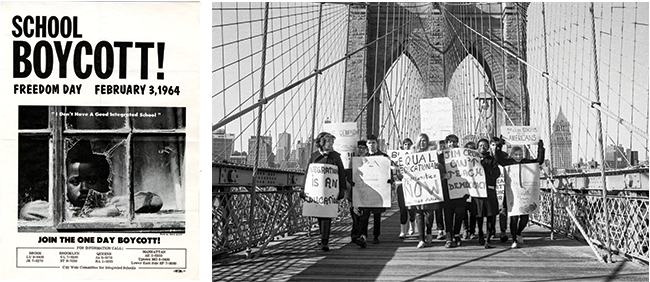
Other activists highlighted in the exhibition feature their concerts and other events organized to help raise funds for voter registration drives, bail money for civil rights activists and other causes. Those include Coretta Scott King at the Freedom Concert on Nov. 15, 1964; Miles Davis at the Philharmonic Hall; Nina Simone, who showed up to donate a performance next to The Freedom Singers; and comedian Dick Gregory at Carnegie Hall, and the Freedom Spectacular that was held at Madison Square Garden on May 14, 1964.
New York state and New Yorkers have a long history of activism, this exhibit sheds some light on just a few of those that were crucial 60 years ago in the passing of the Civil Rights Act of 1964.
The exhibit is free and open to the public from 7 a.m. until 7 p.m. on the second floor of the New York State Capitol in Albany.

